Table of contents
Oat cream or vegan oat cuisine ( organic ) is a plant-based alternative to conventional cream. Industrially produced, it is heated to high temperatures and is no longer raw, unlike the homemade version made from sprouted oats.
Use in the kitchen
What is oat cuisine or oat cream? Oat cream, oat cuisine or oat cream are different names for vegan whipped cream or vegan cream as an alternative to conventional cream made from milk. Oat cuisine is used to refine hearty dishes such as casseroles, gratins, pan-fried dishes, purees or all kinds of soups. Examples of recipes with oat cream are creamed spinach, mushroom or tomato cream sauce. In savory dishes, the oat flavor is almost unrecognizable.
Sweet dishes such as pudding, panna cotta, oat rice or porridge are excellent to make with oat cream. Oat cuisine is also suitable for refining cakes. If the taste of oats bothers you in sweet dishes, you can use soy cream instead. What is soy cream? This oat cream alternative is made from soybeans . To find out more about cream made from soybeans, follow the link.
Can you whip vegan oat cream? Whipping oat cream means mixing it with a mixer until it is firm or at least thick. Well-chilled oat cuisine can be whipped until stiff. There is also special oat cream for whipping, but this often contains emulsifiers and stabilizers. Homemade oat cream is less suitable for this.
In general, vegan cream substitutes, such as oat cream, are more stable against heat, acid and alcohol and can be stored longer than cream made from milk.
oat
You can easily make your own cream oat cuisine - even without any additives:
Ingredients: You need 1 part oat flakes (e.g. 100 g), 5 parts warm water (500 g), 1 tablespoon vegetable oil (e.g. rapeseed oil ), a pinch of salt . A little cream of tartar gives the cream more consistency.
Preparation: Let the oat flakes steep with salt and about half of the warm water for about 5 minutes. Stir the thickened mixture and gradually add the remaining water and then the oil. Mix the entire mixture well in a high-performance blender for two to three minutes.
Allow to swell for about 10 minutes and then press through a fine sieve. To make the oat cream as white as possible, filter it through a cotton or cheesecloth to separate the solid residue from the liquid.
The residue (pomace) can be eaten or used for face masks, for example.
Please note that whole oat grains are usually dried (90-100 °C) and oat flakes are also steamed so that as many organisms as possible die, which increases the shelf life. 23 Raw foodists in particular should know this. In addition: If you enrich the Erb-Müesli with oat flakes, use whole oats that are capable of germinating and always crush the oat grains fresh with a grain crusher.
Tip: You can change the taste of the oat cream by choosing the oil: walnut oil tastes very good, but because of the high proportion of the particularly healthy and essential omega-3 fatty acid ( alpha-linolenic acid, ALA), linseed oil is even better.
Vegan recipe for hollandaise sauce with oat cream
Ingredients (for 5 servings): 250 g margarine, 200 ml oat cream, 200 ml warm water, 3 tbsp cornstarch, 1 pinch of salt, 2 pinches of grated nutmeg, 3 pinchesof pepper, 3 dashes of lemon juice, 1 tsp turmeric .
Preparation: Slowly melt the margarine (do not boil!). Then slowly stir in the starch that has been mixed with warm water using a whisk and allow to thicken. Now stir the oat cream, salt, pepper, nutmeg, turmeric and lemon juice into this mixture and season to taste. The hollandaise sauce goes perfectly with asparagus and boiled potatoes .
Vegan recipes with oat cream can be found under the note: " Recipes that have the most of this ingredient ".
| Not only vegans or vegetarians should read this: Vegans often eat unhealthily. Avoidable nutritional mistakes . |
Purchasing - Storage
Oat cream is available as a long-lasting product in selected supermarkets such as Coop, Migros, Spar, Rewe, Billa and Edeka . Denner, Volg, Aldi, Lidl, Hofer etc. rarely stock oat cream. Many organic shops, organic supermarkets ( Denn's Biomarkt, Alnatura ), health food stores and online shops ( Dm ) sell oat cream in organic quality - from a wide range of suppliers.
Oat cream contains water, whole oats, oil (e.g.sunflower oil ) and possibly additives.
The thick consistency of an oat cream compared to a thin oat drink is not due to a higher proportion of oats, but to the addition of thickeners (stabilizers). This is shown by a comparison of different products and manufacturers: Most oat drinks consist of water, approx. 11% whole grain oats, sunflower oil and sea salt . Oat cream contains water, 9% -11% whole grain oats, oil and sea salt and additionally guar gum (E402), carrageenan (E407), locust bean gum (E401) or xanthan gum (E415) as thickeners. All of these additives are also approved for organic oat cream. 1
If you buy oat cream in the store, please always read the ingredients list and prefer organic oat cuisine without preservatives or thickeners.
The availability of oat cream varies depending on the size of the store, catchment area, etc. Our recorded food prices for the DA-CH countries can be found above under the ingredient image - and by clicking on them you can see their development at different suppliers.
Storage tips
Because purchased oat cream is ultra-heat treated or pasteurized, it will last for several years if closed and unrefrigerated. Once opened, it should be used within 3 to 4 days. Homemade oat cream will last for about 6 days in a sealed jar in the refrigerator.
Oat cream can be frozen with virtually no loss of quality to extend its shelf life. Oat cream can also be processed through fermentation to make oat cream yogurt (similar to soy yogurt ) or oat cream kefir. You can find out more about how to make plant-based yogurt under the ingredients coconut yogurt and soy yogurt .
Ingredients - Nutritional values - Calories
Oat cream has an energy content of 92 kcal/100g, contains 7% fat, 6% carbohydrates and hardly any protein (0.3%). 21 Cream made from milk contains 250 kcal more energy, and the fat content is also significantly higher (approx. 36%). 20
The whole oat grain, however, is considered very valuable, particularly because of its high protein content (17%). Oats are the most nutrient-rich grain and contain twice as much fat as wheat ; they also have a very high carbohydrate content (70%). Many of the positive properties of oats are lost during industrial processing.
Manganese is contained at 0.30 mg/100g and is comparable to coconut yoghurt . More can be obtained from rye (2.6 mg/100g) or kamut (2.7 mg/100g). 20
Oat cream contains 0.10 mg/100g thiamine, a B vitamin. Coconut butter has a similar value. If you mix wheat germ (1.9 mg/100g), linseed (1.6 mg/100g) or sunflower seeds (1.5 mg/100g) into the yoghurt, you can increase the proportion slightly. 20
With 100 g of oat cream you can cover 9% of your daily requirement of vitamin K (5.5 µg). You can get more of the fat-soluble vitamin from vegetables, e.g. white cabbage (76 µg/100g) or broccoli (102 µg/100g). 20
The essential amino acids contained in oats do not have an optimal ratio, which can be improved with pulses. 3 It has been known for years that the body only irreversibly transaminates lysine and threonine, so only these are essential.
You can find all the ingredients of oat cream, the coverage of the daily requirement and comparison values with other ingredients in our nutrient tables. In the article Nutrients explained you will get a detailed insight into the topic.
Health effects
Beta-glucans (β-glucans) are water-soluble dietary fibers. They are found in the cell walls of grains, bacteria and fungi. Those from oats or barley in particular lower blood sugar, blood fats and cholesterol levels and, as prebiotics, improve intestinal health. The nervous system also benefits from oats. 4,8
Plant-based drinks and products made from them containfiber, vitamins, minerals and antioxidants. They are therefore often referred to as functional or nutraceutical foods. 7 Nutraceutical is a made-up word, made up of the English words 'nutrition' and 'pharmaceutical'. If you compare cow's milk with oat milk (the basis of oat cream), you can see the health advantages and disadvantages. While high consumption of animal products causes cardiovascular diseases, among other things due to high cholesterol intake, the consumption of plant-based milk reduces the risk of suffering from cardiovascular diseases and minimizes the risk of cancer, atherosclerosis and diabetes. 7
However, the bioavailability of vitamins and minerals in plant-based products is often not optimal due to the antinutrients they contain. This problem can be solved by fermentation. Note that there is no sugar in the product, as this has a negative effect on dental health. 7 Nutrients are also lost during processing, which is why the industry often adds vitamins and minerals such as vitamin D, calcium and vitamin B12 to plant-based drinks.
Oats and oat cream are considered to be very well tolerated by many diabetics. 5
Secondary plant substances
Many of the health effects of oat cream can be attributed to the secondary plant substances it contains. Our article on secondary plant substances provides an overview of the classification of substance groups, their occurrence in foods and possible effects on humans. Oats contain the following secondary plant substances, among others: 8,10,22
- Isoprenoids: Triterpenes: Sterols (Delta-5-Avenasterol, Delta-7-Avenasterol,Beta-Sitosterol ), Saponins (Avenacoside A, Avenacoside B)
- Polyphenols: Phenolamides: Avenanthramides (Avenanthramide A, Avenanthramide B, Avenanthramide C); Phenolic acids: Hydroxybenzoic acids (Protocatechuic acid, Syringic acid, 4-hydroxybenzoic acid, Gallic acid, Vanillic acid); Hydroxycinnamic acids (Ferulic acid, o-coumaric acid, p-coumaric acid, Caffeic acid, Sinapic acid); Flavonoids: Glycoside flavonoids (Linarin, Tilianin); Flavonols (Kaempferol, Quercetin, Myricitrin, Quercitrin, Rutin); Flavones (Tricin, Luteolin, Apigenin)
However, it should be noted that the composition of secondary plant substances in oats and products made from them can vary depending on the variety, time of harvest, cultivation conditions, recipe and production process. 9 Therefore, quantities are only of limited use and should only be understood roughly.
Oats, the basis of oat milk and oat cream, contain numerous bioactive substances that can help prevent cancer, high cholesterol, diabetes and cardiovascular disease. In a study examining the risk of chronic kidney disease and kidney stones from consuming plant-based milk, oat milk showed the lowest risk of kidney stones compared to almond milk and cashew milk and also outperformed cow's milk. Another analysis shows the effect of oat milk consumption on blood lipids and antioxidant capacity. After four weeks of daily consumption of 0.75–1 liter of oat milk, plasma cholesterol levels decreased significantly compared to consuming cow's milk, while antioxidant capacity increased. 8
Avenanthramides are found only in certain plants, especially oats, the basic ingredient in oat cream. These phenolic compounds have been shown to have anti-inflammatory, antihypertensive and antitumor properties in in vitro and in vivo studies. 8,10 In a human study, administration of these polyphenols increased antioxidant biomarkers. In rats, avenanthramides increased antioxidant defense enzymes. In hamsters, they prevented the oxidation of LDL cholesterol in the blood, which may help prevent cardiovascular disease. 22
Dangers - Intolerances - Side effects
Cream substitutes made from oats or spelt are not suitable for people with gluten intolerance. Products made from soya, coconut or nuts are more suitable.
When it comes to industrial products, you need to pay attention to the fats added: coconut oil, hydrogenated palm oil or hydrogenated soybean oil are also often used in the production of oat cuisine. In addition, there are types of sugar, emulsifiers and thickeners.
Carrageenan (E407) is also permitted as a stabilizer or thickener in organic vegan oat cuisine. The polysaccharide from red algae is a "cheap filler" in the food industry and is now very controversial. Even though 75 mg/kg body weight per day is considered harmless, there are still animal experiments with degraded carrageenan that triggered intestinal inflammation and altered the immune system. 2
Ecological footprint - animal welfare
The CO 2 footprint of oat cream is between 0.6 and 1.16 kg CO 2 eq/kg. 11.24 Organic animal cream shows a value of 5.3 kg CO 2 eq/kg. 11
Another study by a cooperation project of various research and environmental organizations assesses oat cream according to its CO 2 footprint in relation to its nutritional value. Oat cream receives the rating: "In the goal of climate-friendly nutrition (50% better than the average)". 12
It is difficult to find concrete values for the water consumption of oat cream. Oats have a water footprint of 1788 l/kg. This is made up of 1479 l of green, 181 l of blue and 128 l of grey water. 14 Producing one litre of oat milk requires around 48 litres of fresh water ("blue water"). Cow's milk comes to 628.2 l/l according to this calculation method. 13
In 2012, a student from Finland investigated the water footprint of oat milk as part of her master's thesis. This study shows 982 l/kg (or l/l) for water consumption over the entire product life cycle (including water pollution). 16 In relation to the calorie content, the water consumption of grain is also significantly lower at 0.51 l/kcal than that of milk at 1.82 l/kcal. 17
Plant-based "milk" products (based on oats, soy and almonds ) are more environmentally friendly than cow's milk (conventional and organic). However, it should be noted that these products differ considerably in terms of ingredients. 15
For detailed explanations of various sustainability indicators (such as ecological footprint, CO2 footprint, water footprint), see our article: What does the ecological footprint mean?
Animal welfare - species protection
Even if oat cream is a completely different product from a nutritional point of view than animal cream, the use of oat cream can make it easier to avoid cream. This reduces the animal suffering caused by the consumption of cream.
The dairy industry is characterized by animal suffering. Standard practices include the forced insemination of cows, the separation of calves from their mothers a few days after birth and the severe restriction of the cows' freedom of movement and exercise. Such conditions increase the risk of the cows developing various diseases (bacterial infections, inflamed painful udders, joint injuries, lameness). The animals live in fear and cannot express their natural behavior, including social behavior. 18
Worldwide occurrence - cultivation
The Swedish brothers Rickard and Björn Öste began researching the recipe for oat milk in 1990. 19 Since then, oat milk and oat cream have been available almost everywhere.
Cultivation - Harvest Information
about the cultivation of oats can be found under the ingredient oats .
Industrial production
The exact production process varies depending on the producer, but the basic steps for producing oat milk are: Pre-treatments such as soaking, dehulling, drying, crushing and grinding before the oats are "slurried". In contrast, there is a method in which the whole grains are germinated and malted and then slurried. Enzymatic hydrolysis takes place before homogenization. In between there are filtration steps for a finer result. 26
In some production methods, blanching (95 °C) of oat grains and sterilization (135 °C) are important intermediate treatments for the production of oat milk. 25 Oat cream is usually somewhat thicker than oat milk and may be mixed with necessary additives. In addition to oils, industrially produced products often contain vitamin D, calcium, vitamin B12, emulsifiers (e.g. E472e), stabilizers (E415) and acidity regulators.
Some manufacturers produce oat products based on fermented oat milk. This is expected to improve the nutritional and sensory profile of oat drinks, but further testing is required. 26
Further information
How does the name oat cuisine come about? The two brands Oatly and Natumi call their oat cream 'Oat Cuisine' (organic). Hellovegan calls it "the vegan cream alternative" and Naturkost describes oat cream as a cream substitute, lactose-free. Alnatura presents the product as Oat Cream Cuisine. At Chefkoch you can browse through oat cream recipes. The name "Cuisine" probably comes from the fact that these cream alternatives can be used in the kitchen for cooking and refining (French cuisine = kitchen). In French we have rarely found alternative names with the component "cuisine". There, the cream substitute is more often called crème d'avoine, crème de soja, etc., depending on the basic ingredient.
In 2017 , NDR.de Ratgeber published an article about oats: cream, bath additives and muesli... Oats are even the medicinal plant of the year 2017. There are the keywords: "Diabetes: Oat cure lowers insulin dose; Oat cure only with medical advice; Lose weight with an oat cure; Oats lower cholesterol levels; Oats strengthen the immune system and help the skin."
Readers should know that practically any food can be conjured up as a power food. Every food has its own special properties, both positive and negative. Compare the nutrient tables under our ingredients and recipes, which also indicate the average daily requirement.
Instead of milk fat, plant seeds contain vegetable oil or vegetable fat. Vegan cream substitutes can be used to achieve better whipping properties or greater stability at a lower price - and with a lower fat content (max. 15%). 6
Vegan cream is kosher per se, as it is neither meaty nor dairy. Vegan ingredients include oats, soy, rice, coconut, almonds, nuts, spelt, etc. Silken tofu can also be used.
Alternative names
There are a number of alternative names for oat cream: oat cream, oat cuisine, cuisine oat, cooking oat. Other German expressions are cooking cream, whipped cream or spray cream to avoid the term cream, which is protected for products. In Austria, the colloquial term oat cream is used. In English, the vegan cream is called 'non-dairy cream' or 'oat cream'.
Bibliography - 25 Sources
| 1. | Der Brockhaus Ernährung: Gesund essen - bewusst leben. München: Brockhaus. 2011. |
| 2. | Pini U. Das Bio-Food Handbuch. Ullmann: Hamburg, Potsdam. 2014. |
| 3. | Roger J. Heilkräfte der Natur: Ein Praxishandbuch. Zürich: Advent-Verlag. 2006. |
| 4. | Fachgesellschaft für Ernährungstherapie und Prävention. Beta-glucane: Wunderwaffe der Natur? 2023. |
| 5. | Diabetes-hilfe net: Haferflocken bei Diabetes. |
| 6. | Bockisch M. Nahrungsfette und -öle: Handbuch der Lebensmitteltechnologie. Stuttgart: Ulmer. 1993. |
| 7. | Aydar EF, Tutuncu S, Ozcelik B. Plant-based milk substitutes: Bioactive compounds, conventional and novel processes, bioavailability studies, and health effects. Journal of Functional Foods. 2020;70:103975. |
| 8. | Yu Y, Xinping L et al. Oat milk analogue versus traditional milk: Comprehensive evaluation of scientific evidence for processing techniques and health effects. Food Chemistry: X. 2023;19:100859. |
| 9. | Babolanimogadam N, Gandomi H et al. Nutritional, functional, and sensorial properties of oat milk produced by single and combined acid, alkaline, α‐amylase, and sprouting treatments. Food Science & Nutrition. 2023;11(5):2288-2297. |
| 10. | Cui L, Jia Q, Zhao J, Hou D, Zhou S. A comprehensive review on oat milk: from oat nutrients and phytochemicals to its processing technologies, product features, and potential applications. Food Funct. 2023;14(13):5858–5869. |
| 11. | Reinhardt G, Gärtner S, Wagner T. Ökologische Fussabdrücke von Lebensmitteln und Gerichten in Deutschland. IFEU Institut für Energie - und Umweltforschung Heidelberg. 2020. |
| 12. | Greenpeace Schweiz, Stadt Zürich, Planted Foods AG, Branding Cuisine, Tinkerbelle, Inge, myblueplanet, ProVeg International, Dr. Earth, FightBack und Eaternity. All You Can Eatfor climate - Poster. ayce.earth. 2022. |
| 13. | Ritchie H. Dairy vs. plant-based milk: what are the environmental impacts? Our World in Data. Published online January 19, 2022. |
| 14. | Mekonnen MM, Hoekstra AY. The green, blue and grey water footprint of crops and derived crop products. Hydrol Earth Syst Sci. 2011;15(5):1577–1600. |
| 15. | Geburt K, Albrecht EH et al. A comparative analysis of plant-based milk alternatives part 2: environmental impacts. Sustainability. 2022;14(14):8424. |
| 16. | Lindholm T. Water footprint assessment for water stewardship in the agri-food sector. Master Thesis Series in Environmental Studies and Sustainability Science. Lund University. 2012. |
| 17. | Mekonnen MM, Hoekstra AY. A Global Assessment of the Water Footprint of Farm Animal Products. Ecosystems. 2012;15(3):401–415. |
| 18. | Ioannidou M, Lesk V et al. Don’t mind milk? The role of animal suffering, speciesism, and guilt in the denial of mind and moral status of dairy cows. Food Quality and Preference. 2024;114:105082. |
| 19. | Ewing-Chow D. Björn Öste, inventor of oat milk, on the road to number one. Forbes. 2020. |
| 20. | Die österreichische Nährwerttabelle ÖNWT. |
| 21. | USDA United States Department of Agriculture. |
| 22. | Chen CYO, Milbury PE, Collins FW, Blumberg JB. Avenanthramides are bioavailable and have antioxidant activity in humans after acute consumption of an enriched mixture from oats. The Journal of Nutrition. 2007;137(6):1375–1382. |
| 23. | Ganssmann W. Hafer. In Lebensmitteltechnologie: Biotechnologische, chemische, mechanische und thermische Verfahren der Lebensmittelverarbeitung. Springer; Heiss, R. (Hrsg.). 1996:149ff. |
| 25. | Zhou S, Jia Q et al. Physical–chemical and sensory quality of oat milk produced using different cultivars. Foods. 2023;12(6):1165. |
| 26. | Yu Q, Qian J, Guo Y, Qian H, Yao W, Cheng Y. Applicable strains, processing techniques and health benefits of fermented oat beverages: a review. Foods. Januar 2023;12(8):1708. |

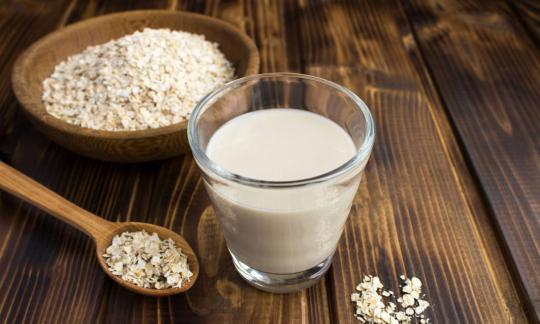

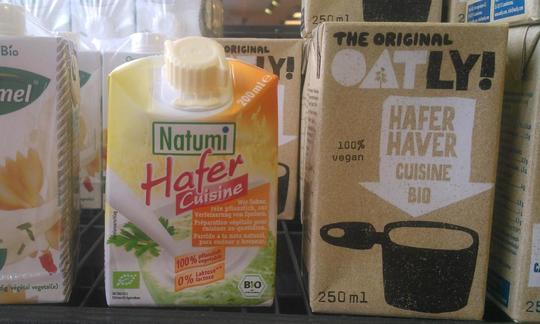

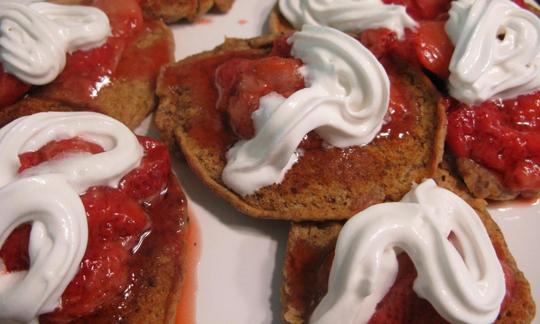

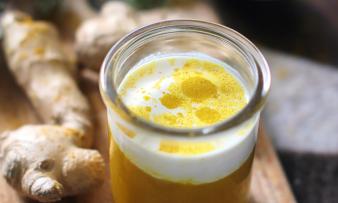
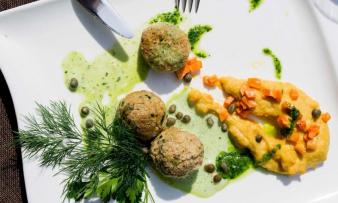


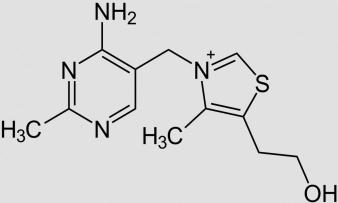



Comments